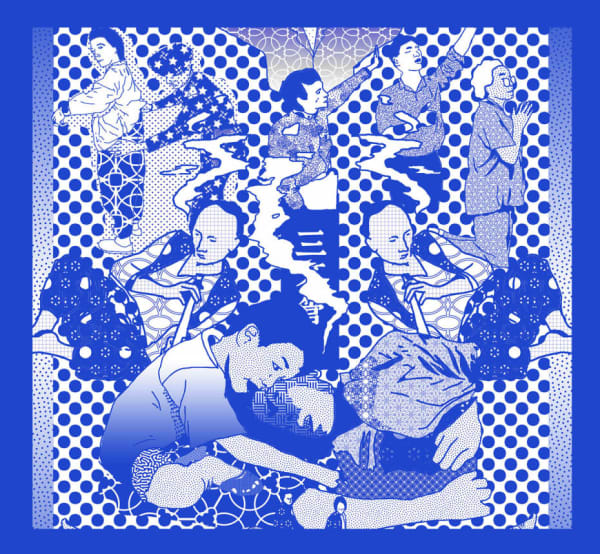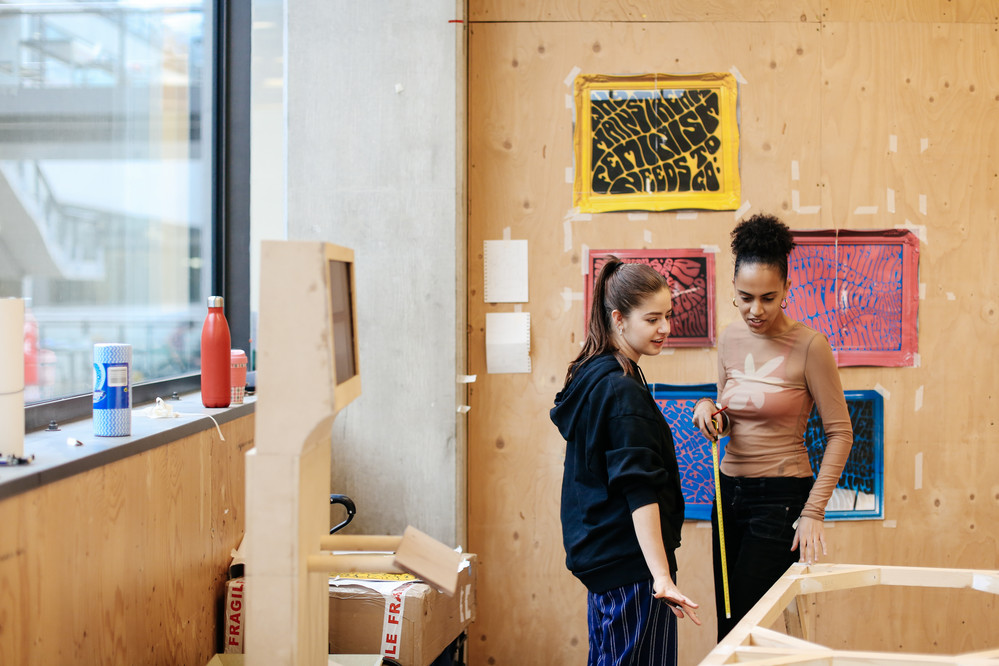Last year, BA Graphic Communication Design and Zak Group launched FUTURE FWD, a scholarship for a student from currently underrepresented communities. Now in its second year, we’re delighted that this scholarship has grown with support from Pentagram and Some Days prototyping a new model of collaboration between education and industry.
We sat down with Rebecca Ross, Director of our Graphic Communication Design programme, Zak Kyes, Creative Director of Zak Group, Naresh Ramchandani, Partner at Pentagram and Steve Reinmuth, Creative Director at Some Days, to discuss the relationship between education and industry and future plans for FUTURE FWD.
Zak, how did FUTURE FWD begin?
ZK: It came from the observation that something like this didn't already exist: a scholarship for graphic design that was funded by a graphic design studio. It came out of the core belief that, as an industry, we're only as good as the next generation of designers and a responsibility to find ways to close the equity gap that exists for young designers in London.
The design industry – like many other industries – lacks diversity and needs to change to create opportunities for communities that are underrepresented. Education is the best way to change the status quo.
The first recipient of the three-year scholarship was announced last year, and this year we are able to further develop FUTURE FWD in partnership with these two great studios: Pentagram and Some Days. It was crucial for me that a scholarship for graphic design be funded by a collective of design studios. It’s not just about one studio. You could see us as competitors, but if you look beyond that I see a huge potential to work together collaboratively and to co-ordinate to create change from within. [If you’re a design studio that’s interested in joining FUTURE FWD, scroll to the end of this page to see how to get in touch.]

Naresh and Steve, why did your studios come on board?
NR: At Pentagram, we’ve been looking carefully at our diversity and inclusivity policies. The murders of Breonna Taylor and George Floyd and Black Lives Matter movement put a lot of scrutiny on all studios and companies. A lot needs to be done to be genuinely inclusive, to have the richness of creative expression that is actually connected with society.
We were keen to do something around the pipeline because you look at the London design world, or the UK design world, and it's not sufficiently representative at all. It's really missing a chance to flourish. Then we heard from Zak.
SR: There’s been a siloed approach of people saying “this is what we're doing” and “this is what we’re doing”. We reached out to Zak to offer our support and we know that if you can get three studios on board, there's a huge potential to get more.
Is there a reason this has happened in graphic design and not another discipline?
RR: Graphic design studios, relative to other design disciplines, tend to be on the smaller side and that makes joining up all the more practical and meaningful. I really appreciate that education was identified as an important starting point for FUTURE FWD because it's about long-term change.
The traditional relationship between creative professionals and education is that they are invited to speak to students, sharing their work and experience. This is a completely different kind of engagement.
NR: I've always been a little suspicious of the interventionist approach when you rock up and give a presentation. That’s the least invested model whereas FUTURE FWD needs to be integrated into the practice of the College and it gives the student a plurality of experiences if they want it.
Central Saint Martins are the guardians of their education and we’re not skewing the curriculum or altering that in the wrong way. But it does offer studios a more meaningful and structural impact.

What do you hope for the future of this collaboration?
SR: We're based in the US, so I’m really interested in expanding the programme to a US network of studios and schools. It’s great to be doing this really having this united front actually.
Education can change the way we connect within this industry. It’s not about conferences showing off pretty visuals but connecting in service of something for good, for future designers. I see the potential of it expanding, getting more and more studios on board, that exponential effect. It's open to anyone who would want to be part of it.
ZK: Education is the most important starting point, but it's also only one part of the equation. In conversation with Naresh and Luke Powell at Pentagram and Steve at Some Days, the scholarship has evolved to include commitments from our studios to offer paid internships and provide ongoing mentorship. We’re looking at it more holistically, asking what kind of support we can provide at key moments. FUTURE FWD is an experiment in institution-building that could expand across a range of industries and disciplines.
I think it’s important to reach even further down the pipeline to students that don't yet realise that they could be designers. There's definitely outreach to do, not only to kids that may be interested in design, but kids that don't know that's a thing you can do. We need to be more open source and show what happens in a studio – that’s something we should all be doing.
RR: Yes. We need to create better awareness of graphic design as a profession that can welcome people who might not otherwise have considered it. I totally agree with Naresh that a closed loop between industry and education is not in anyone's interest.
The £30,000 FUTURE FWD scholarship provides material costs and living expenses as well as mentorship throughout the course and paid internship opportunities. To apply for this year’s scholarship you must already be an offer holder to study BA Graphic Communication Design at Central Saint Martins. Apply before Monday 23 May.
If you work in a graphic design studio and are interested in learning more about FUTURE FWD. Contact melissa@zak.group.
-

Alison Pong | Hong Kong Walled City
-

FUTURE FWD

